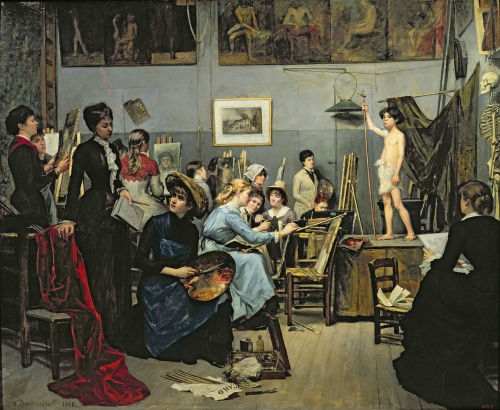Dikeou Pop-Up: Colfax and The Black Cube Dual Opening Recap
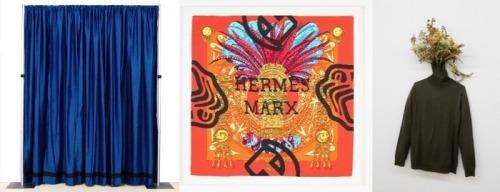
People frequently ask how often we change the exhibitions at Dikeou Collection, and the answer is “we don’t rotate we just expand.” The collection is blessed with a large space at its main location, but as of last year it became apparent that a secondary location would be necessary not just to accommodate the increasing amount of artwork but also to provide a alternative context and experience. Artwork by Lizzi Bougatsos marked the inaugural installation at the ancillary space known as Dikeou Pop-Up: Colfax, followed by Sarah Staton’s Supastore Supastars. On October 22nd, we celebrated the installation of new work in the Pop-Up’s basement by Anicka Yi, Rainer Ganahl, and Devon Dikeou. This opening event was in partnership with Black Cube , a new non-profit nomadic museum in Denver which held its own opening reception for its second pop-up exhibition in the parking lot behind the Dikeou Pop-Up. The simultaneous events brought together a lively mix of Denver’s eclectic art crowd, and was an example of how collaborative events like this strengthen bonds within the creative community.

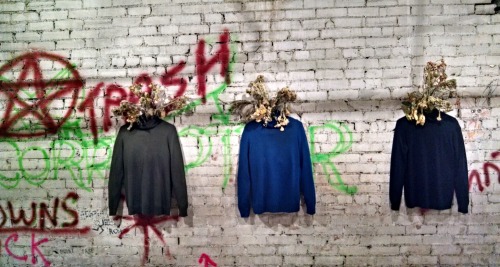
The basement at Dikeou Pop-Up: Colfax was a hangout and jam spot for local musicians at the former Jerry’s Record Exchange. An unlikely venue for the display of fine art, but quite perfect in this particular instance. L’Haine I-V by Anicka Yi, which is comprised of five turtleneck sweaters with bouquets of tempura fried flowers placed in the neck lines a graffiti-covered wall. The earthy, muted tones of the sweaters and flowers contrast with the neon graffiti, but the deteriorated brick serves as a nice backdrop for the dredged and droopy blossoms. Frying the flowers was an interesting process, and one that drew a lot of attention from passersby who had obviously never seen people deep fry roses and daisies in a parking lot before. The public will get used to it, though, as this is something that will have to be redone a few times a month.
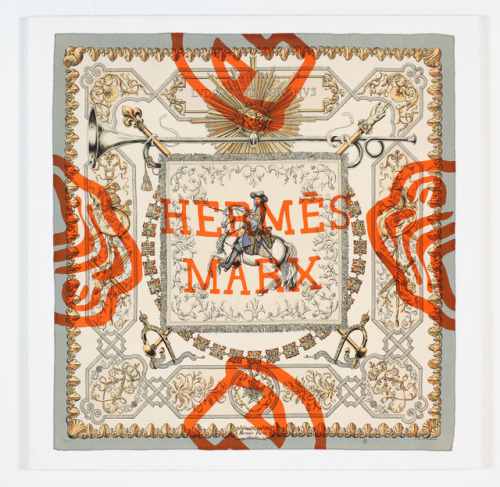
Like L’Haine I-V, Rainer Ganahl’s Hermès/Marx has a dichotomous relationship with the space that simultaneously conflicts and reinforces its message. Ganahl screen printed socialist text and symbols over four (authentic) vintage Hermès scarves, an act that erases their value as luxury items but enhances their value as art objects. It is a work of inherent contradictions, so naturally it requires an unconventional stage. The writing on the carpet in the lower image reads, “Henry Ford was a millionaire but he never owned a Cadillac.” Cheers to that.
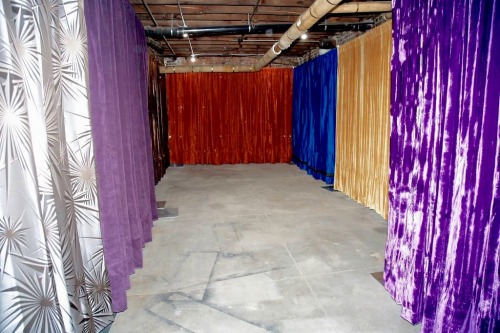
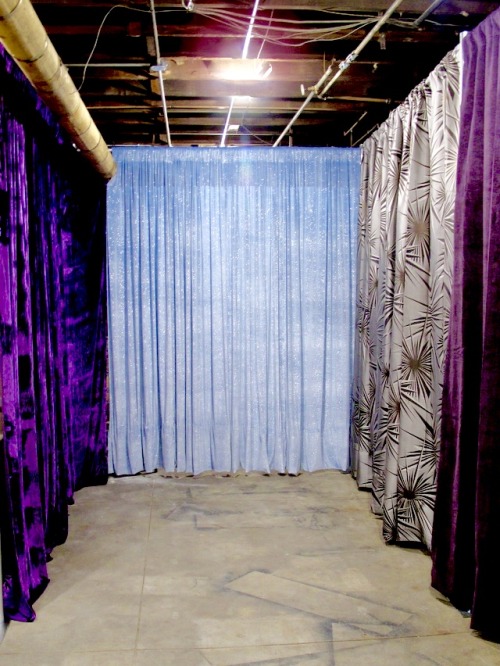
Devon Dikeou’s Between The Acts: Virginia Woolf envelopes the entire second room of the basement with the luscious textures and patterns of stage curtains seen on celebrated late night talk shows. These replicas, which were originally exhibited at the 2014 NADA Art Fair in Miami Beach, calls attention to what goes on “behind the curtain” and references the comedic vision and personality of each host the curtain represents. The hosts represented by these curtains include Conan O’Brien, Jack Paar, Merv Griffin, Jimmy Fallon, Ed Sullivan, Jimmy Kimmel, and Dick Cavett. Stay tuned for an appearance from Johnny Carson…
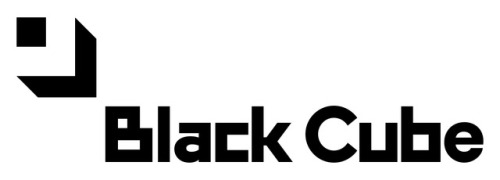
The reception at the Dikeou Pop-Up was held in conjunction with the debut of artist Chad Person’s Prospector, the second exhibit organized by Black Cube. Black Cube is a non-profit, experimental art museum that operates nomadically, founded in 2015 with Cortney Lane Stell as the Executive Director and Chief Curator.
Prospector is a monumental inflatable sculpture designed specifically for its location across from the Colorado State Capital building. The sculpture is a monochromatic blue, inspired by the Disney’s Toy Story 2 character, Stinky Pete. For Person, the character draws many references from Denver - from its gold mining history, to the speculation of current tech and real estate booms, and even the connection within the era of digital commerce. The Black Cube, which is a shipping container placed next to the inflatable, holds small 3-D printed models of the Prospector which people can purchase the rights to and print themselves.
Prospector will be on view in the parking lot until November 11.
Denver is expanding by leaps and bounds, and with that comes some growing pains. Space is scarce and rent is high, and people in the arts are often left scrambling trying to make ends meet and their voices heard. Organizations like Black Cube and venues like Dikeou Pop-Up: Colfax demonstrate the positive outcomes of venturing into alternative territory. Perhaps the ideals of the pristine white-walled gallery are not just impractical these days, but also falling out of fashion. Dikeou Pop-Up: Colfax exhibits some of the most progressive art in Denver in the grittiest of spaces, and Black Cube does the same with no space at all. This city is full of ingenuity, and no matter how tight the squeeze, the community will always find new and surprising ways to bring people’s creative visions to life.
More photos from the opening receptions can be seen here.
— Hayley Richardson

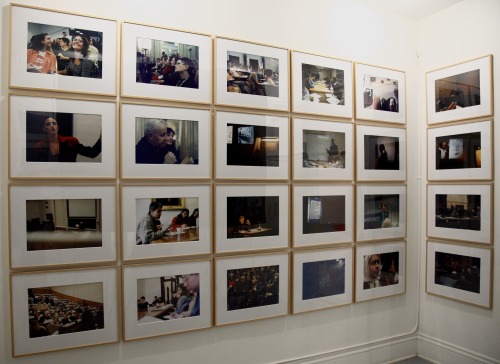
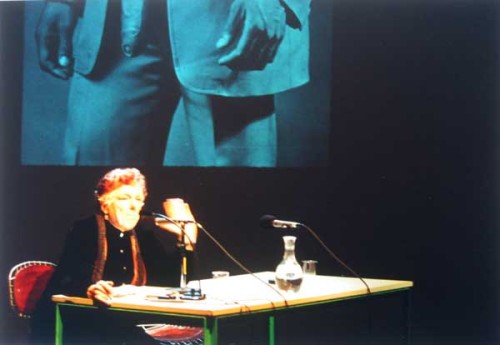

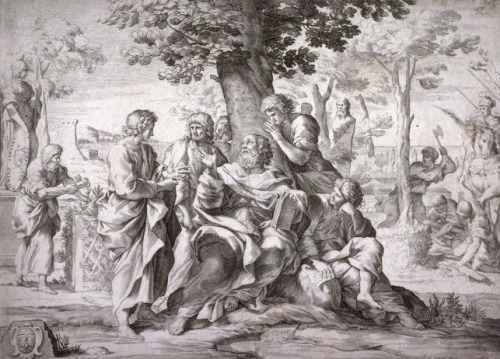
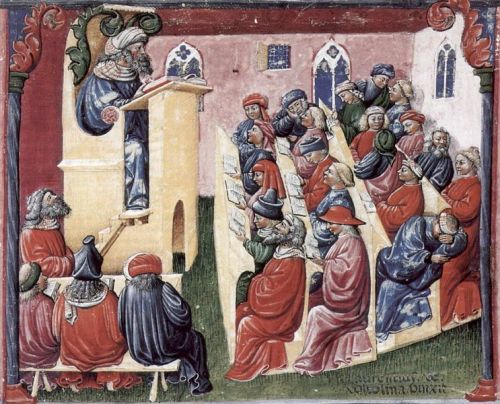
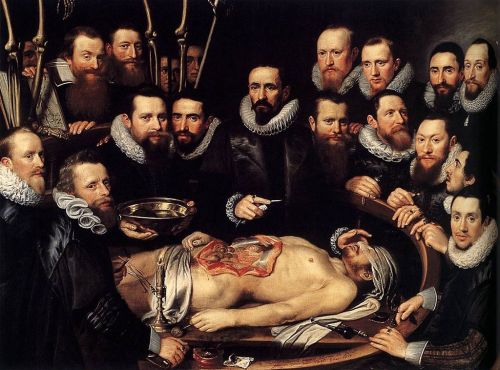

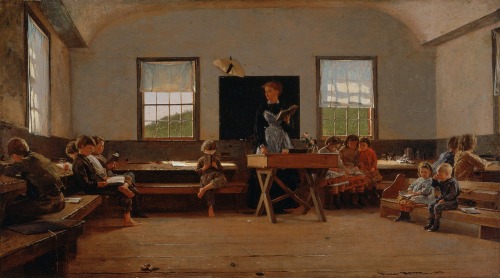 STM620298; Saint Louis Art Museum, Missouri, USA; out of copyright[/caption]
STM620298; Saint Louis Art Museum, Missouri, USA; out of copyright[/caption]